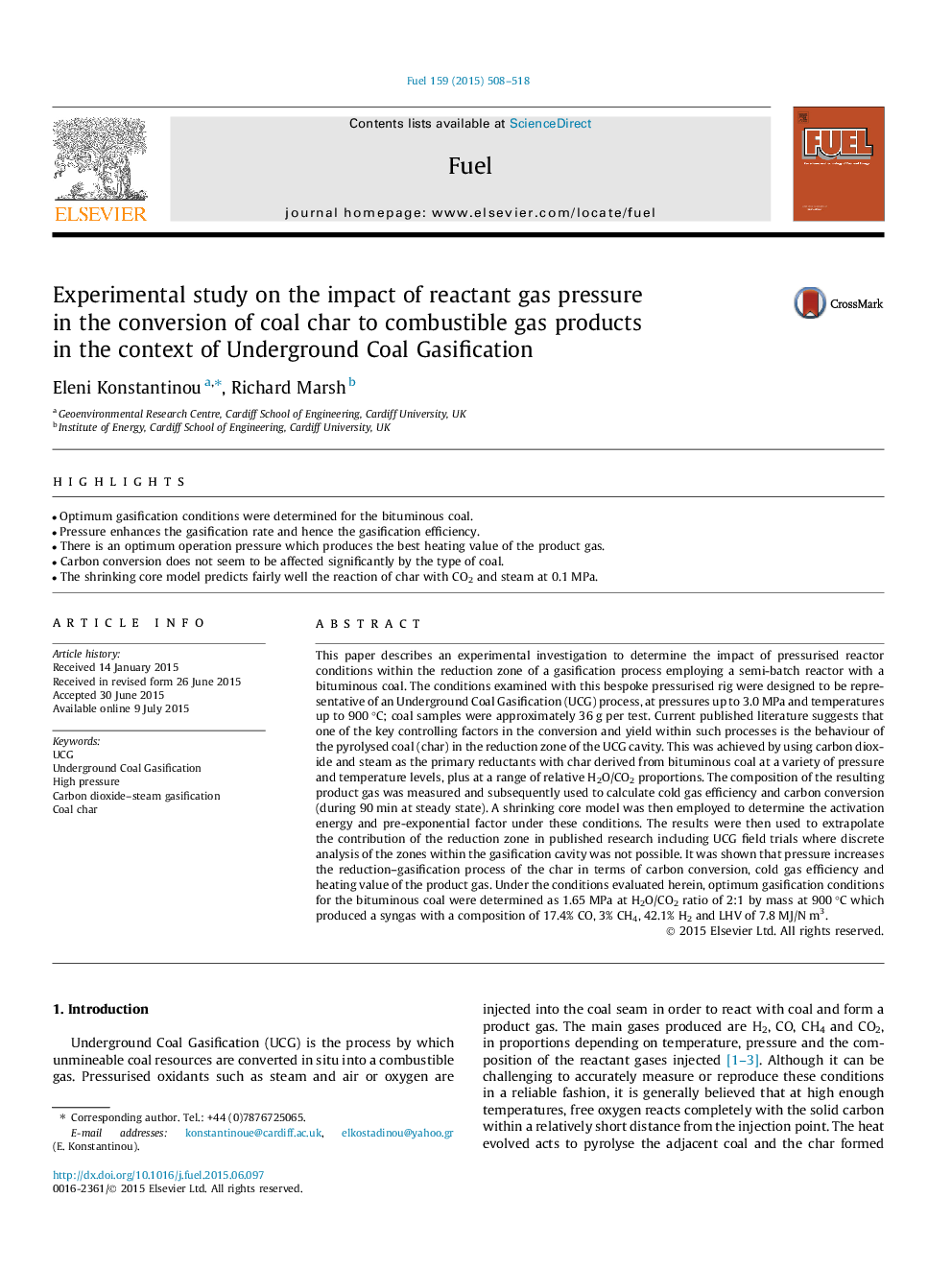| Article ID | Journal | Published Year | Pages | File Type |
|---|---|---|---|---|
| 6634684 | Fuel | 2015 | 11 Pages |
Abstract
This paper describes an experimental investigation to determine the impact of pressurised reactor conditions within the reduction zone of a gasification process employing a semi-batch reactor with a bituminous coal. The conditions examined with this bespoke pressurised rig were designed to be representative of an Underground Coal Gasification (UCG) process, at pressures up to 3.0 MPa and temperatures up to 900 °C; coal samples were approximately 36 g per test. Current published literature suggests that one of the key controlling factors in the conversion and yield within such processes is the behaviour of the pyrolysed coal (char) in the reduction zone of the UCG cavity. This was achieved by using carbon dioxide and steam as the primary reductants with char derived from bituminous coal at a variety of pressure and temperature levels, plus at a range of relative H2O/CO2 proportions. The composition of the resulting product gas was measured and subsequently used to calculate cold gas efficiency and carbon conversion (during 90 min at steady state). A shrinking core model was then employed to determine the activation energy and pre-exponential factor under these conditions. The results were then used to extrapolate the contribution of the reduction zone in published research including UCG field trials where discrete analysis of the zones within the gasification cavity was not possible. It was shown that pressure increases the reduction-gasification process of the char in terms of carbon conversion, cold gas efficiency and heating value of the product gas. Under the conditions evaluated herein, optimum gasification conditions for the bituminous coal were determined as 1.65 MPa at H2O/CO2 ratio of 2:1 by mass at 900 °C which produced a syngas with a composition of 17.4% CO, 3% CH4, 42.1% H2 and LHV of 7.8 MJ/N m3.
Related Topics
Physical Sciences and Engineering
Chemical Engineering
Chemical Engineering (General)
Authors
Eleni Konstantinou, Richard Marsh,
